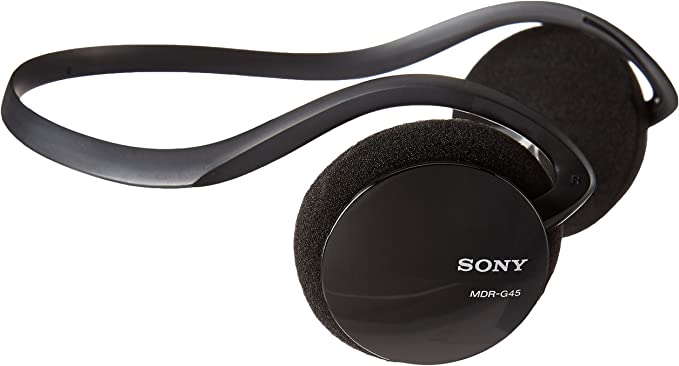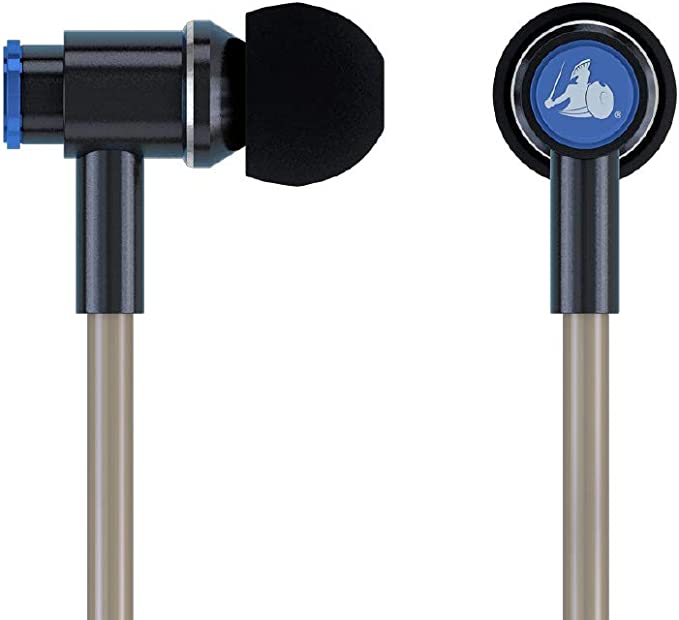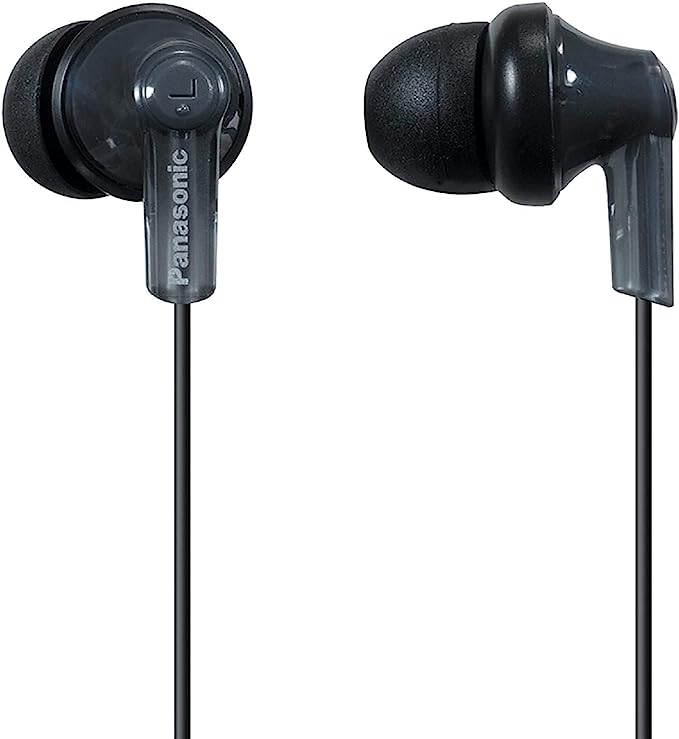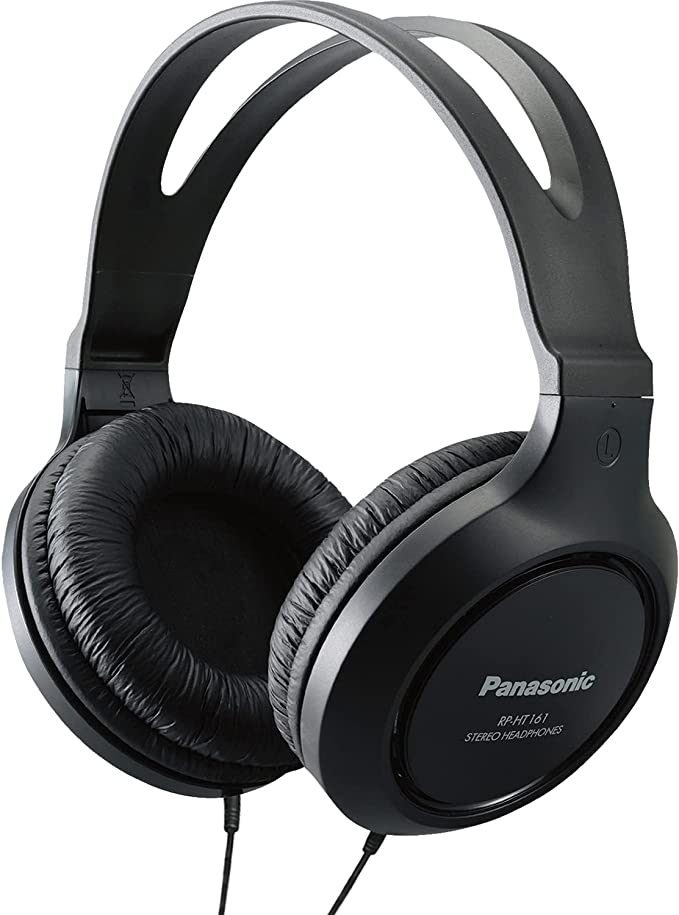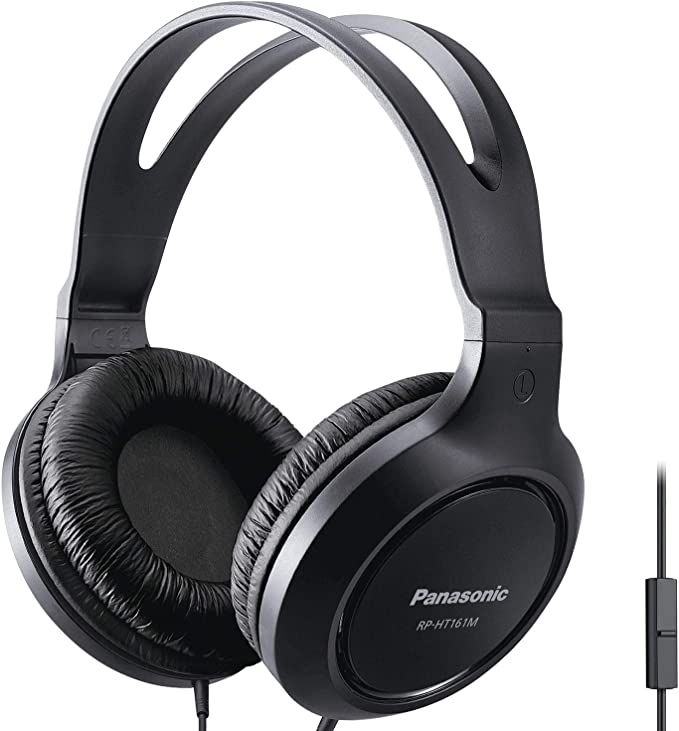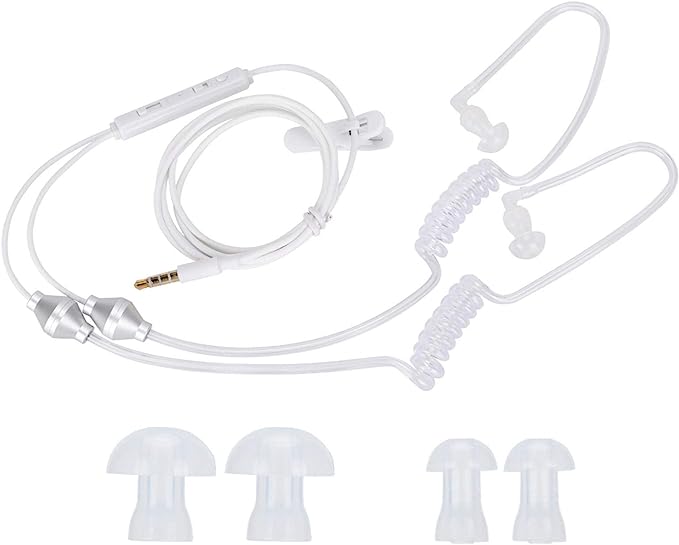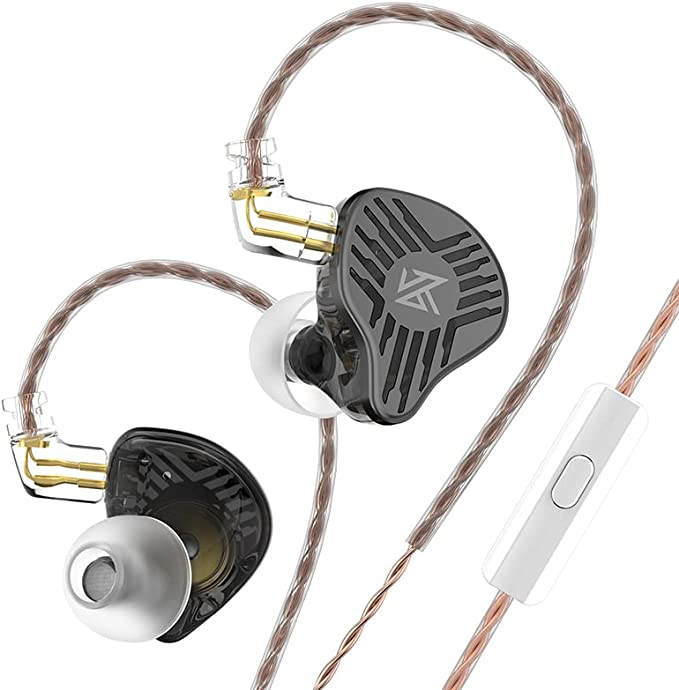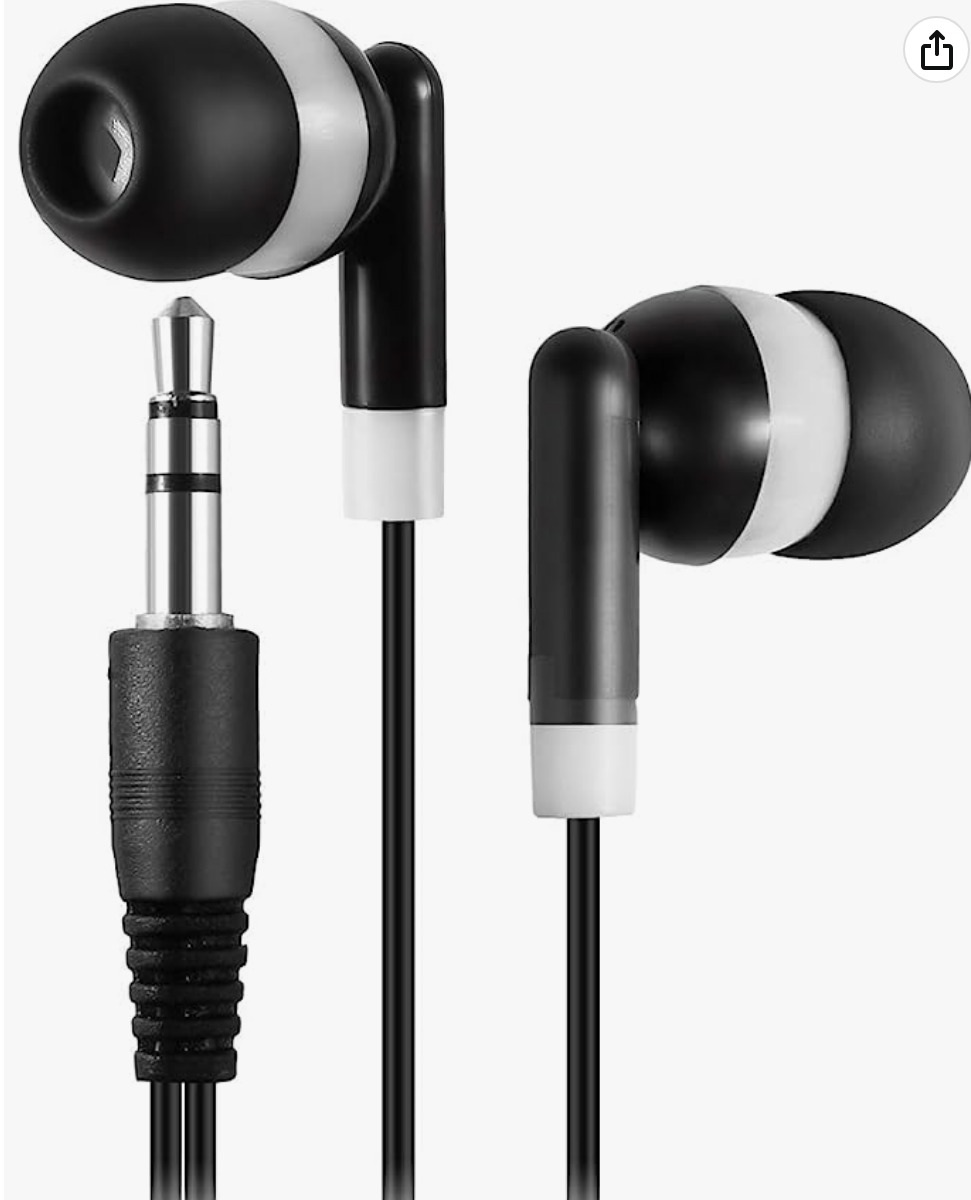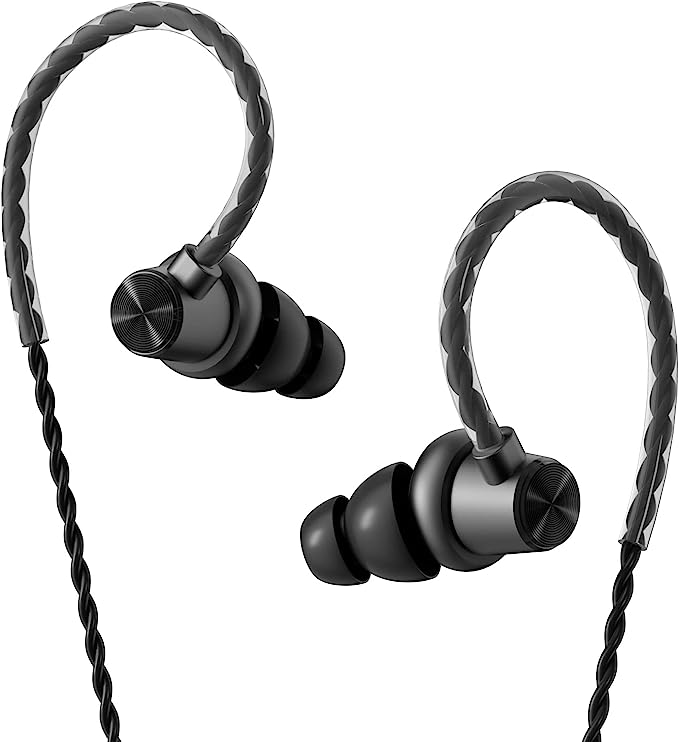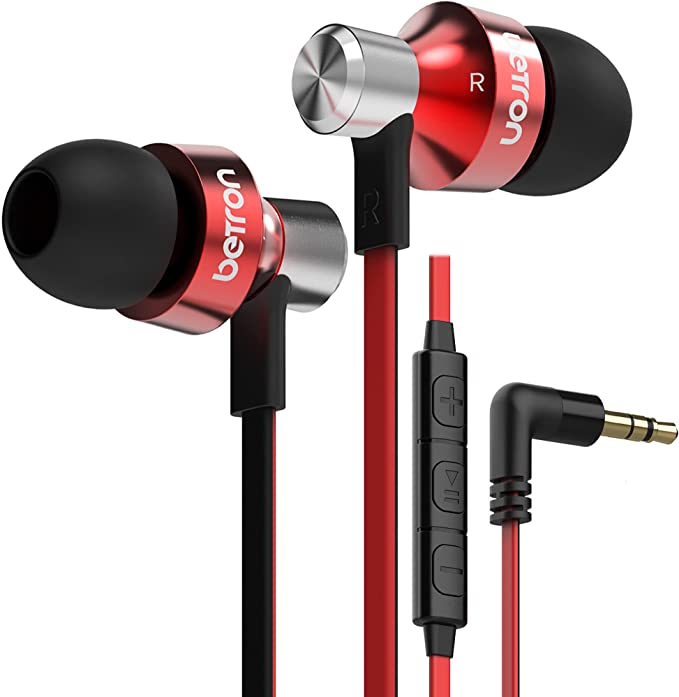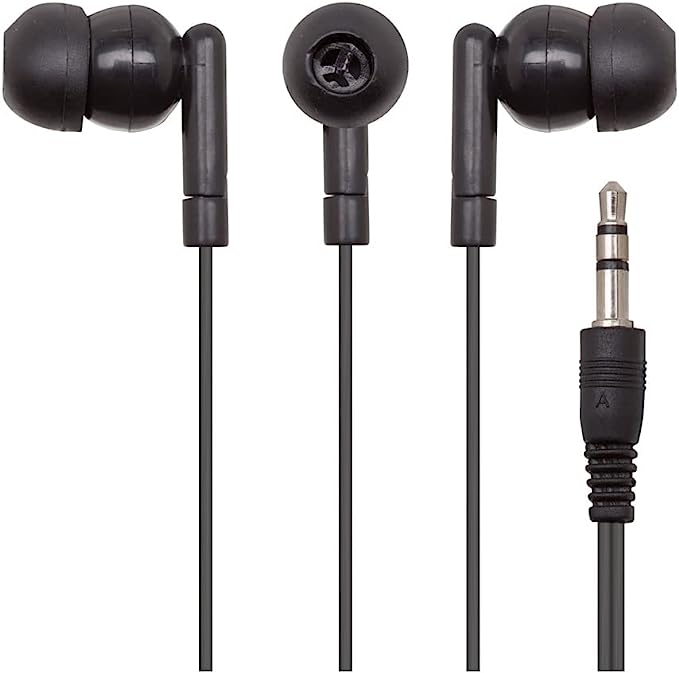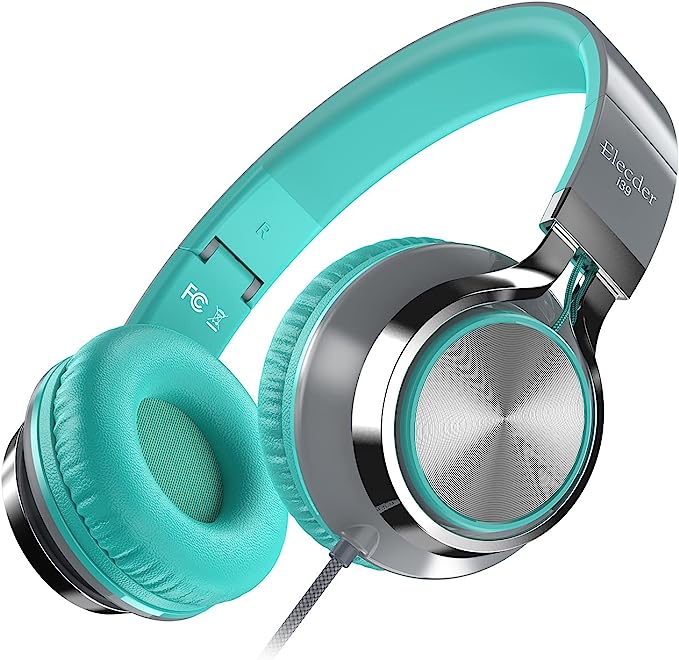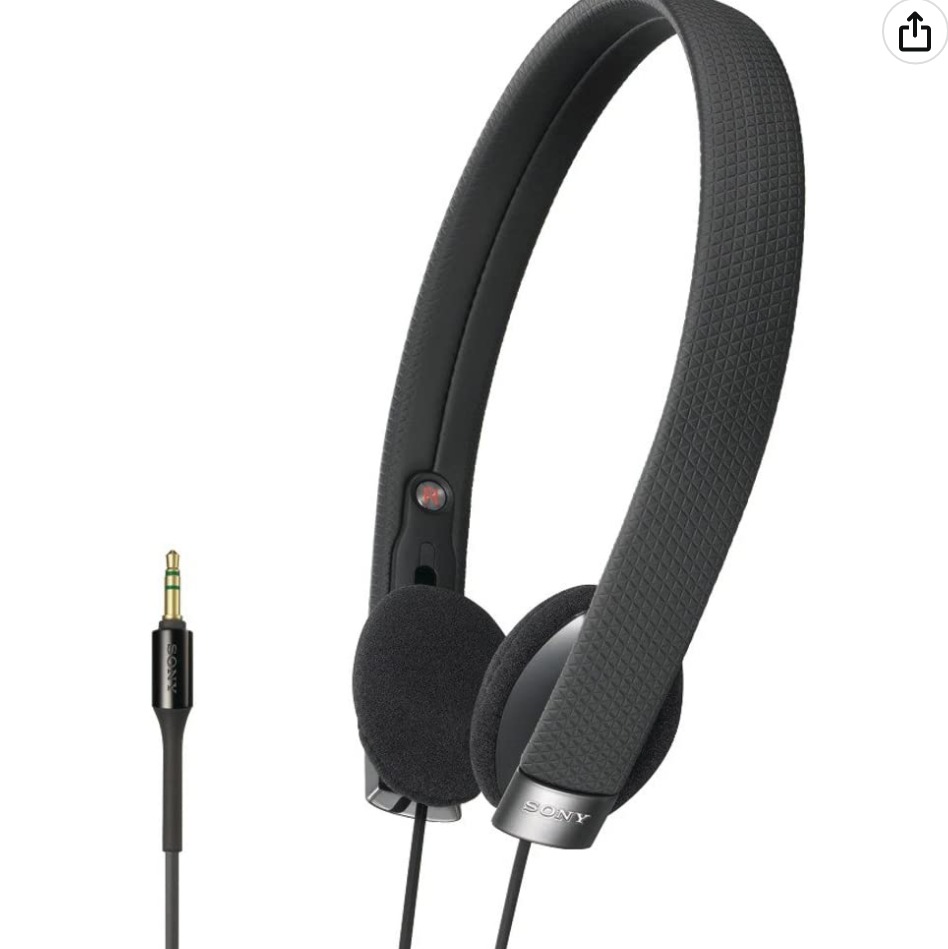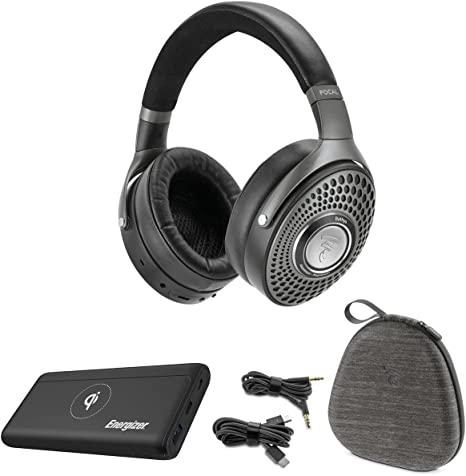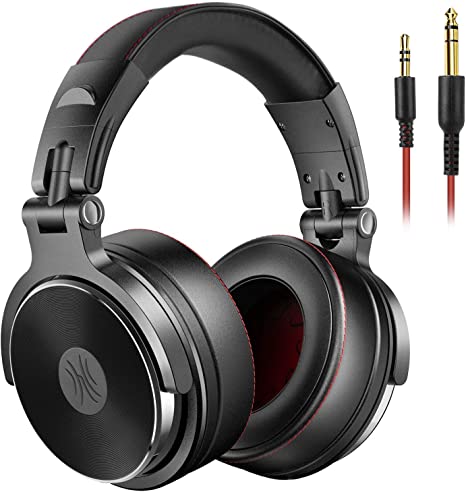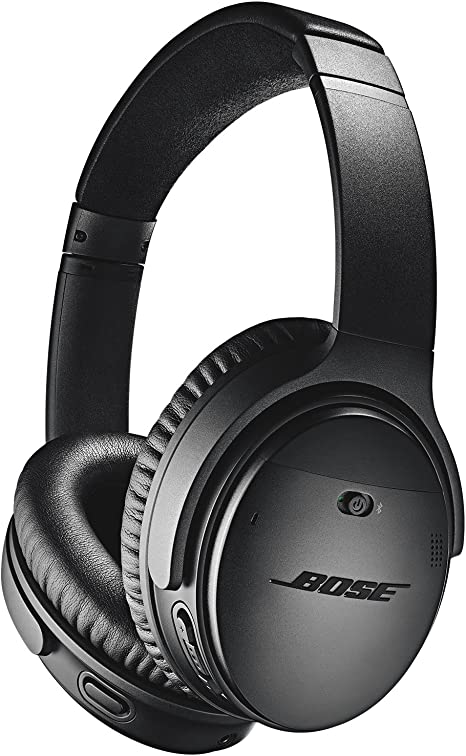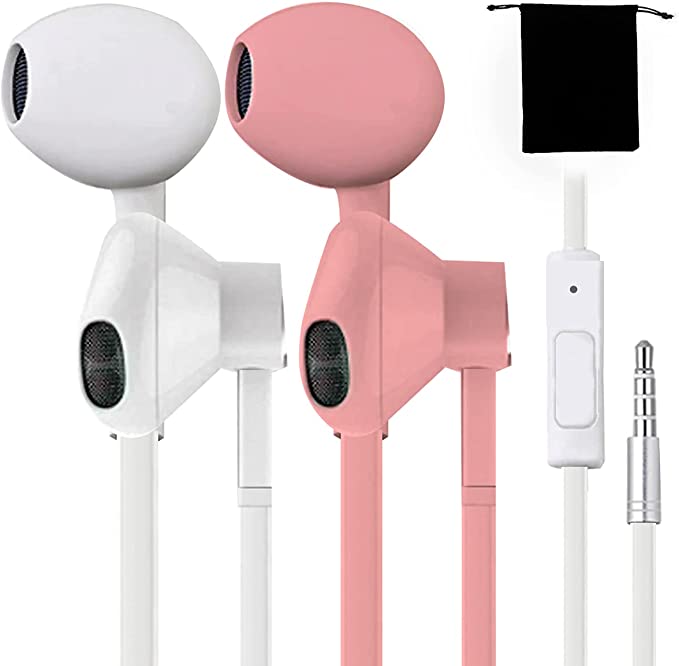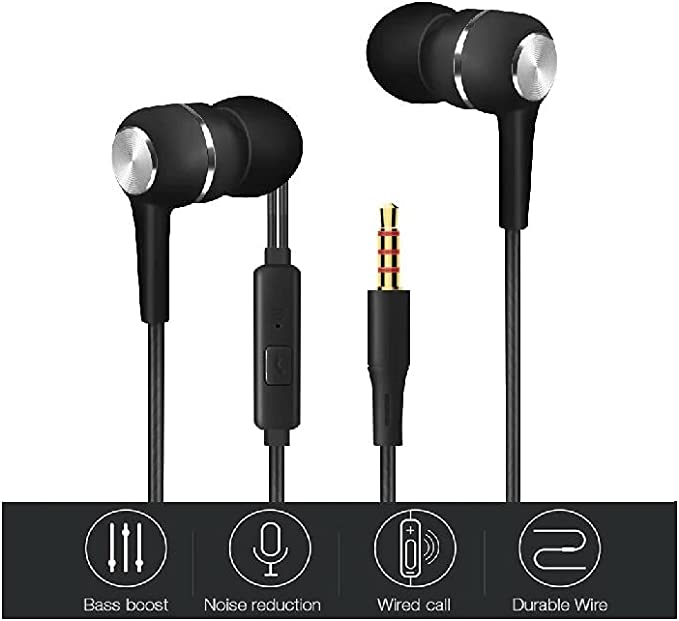Amazon Basics Wired Earbuds: Hear the Difference with Quality Sound
Update on March 21, 2025, 10:49 a.m.
Imagine this: you’re on a packed, noisy bus, the rumble of the engine and the chatter of passengers filling the air. You reach for your earbuds, slip them in, and press play. Suddenly, the chaos fades, replaced by the clear, crisp notes of your favorite song. It’s a small, everyday miracle, made possible by the fascinating science of sound and the clever engineering of in-ear headphones. But have you ever stopped to wonder how it all works?
Sound, at its core, is simply vibration. When something vibrates – a guitar string, a vocal cord, a drumhead – it creates pressure waves that travel through a medium, like air or water. These waves are like ripples in a pond, spreading outwards from the source. Two key properties define these waves: frequency and amplitude.

Frequency, measured in Hertz (Hz), refers to the number of waves that pass a point in one second. This determines the pitch of the sound – how high or low it is. A deep bass note has a low frequency, while a soaring soprano voice has a high frequency. The human ear, remarkably, can detect sounds ranging from roughly 20Hz to 20,000Hz (20kHz), although this range can shrink with age and exposure to loud noises. Amplitude, on the other hand, refers to the size of the wave, which corresponds to the loudness of the sound, measured in decibels (dB).
Now, let’s consider those remarkable instruments that pick up these invisible waves: your ears. The outer ear, the part you can see, acts like a funnel, collecting sound waves and directing them down the ear canal. These waves then hit the eardrum, a thin membrane that vibrates in response. These vibrations are amplified by three tiny bones in the middle ear – the smallest bones in the human body – and transmitted to the inner ear.
The real magic happens in the cochlea, a snail-shaped structure filled with fluid and lined with thousands of tiny hair cells. These hair cells are tuned to different frequencies, and when the fluid in the cochlea vibrates, they sway back and forth. This movement triggers electrical signals that travel along the auditory nerve to the brain, where they are interpreted as sound. It’s a complex and beautiful process, and it’s happening every moment of your life.
But here’s a fascinating twist: our ears don’t hear all frequencies equally. At lower volumes, we’re less sensitive to very low and very high frequencies. This is described by what’s known as “equal-loudness contours”. This is one reason why some audio equipment has a “loudness” button - it boosts the bass and treble at low volumes to compensate for this effect.
So, how do we take all this amazing natural technology and recreate it artificially? Enter the earbud. At its heart, an earbud is a transducer – a device that converts one form of energy into another. In this case, it converts electrical signals from your phone or music player into sound waves. The most common type of transducer in earbuds is the dynamic driver.
Think of a dynamic driver like a tiny drum. It consists of a diaphragm (a thin, flexible membrane), a voice coil (a coil of wire), and a magnet. When an electrical signal passes through the voice coil, it creates a magnetic field that interacts with the magnet, causing the diaphragm to vibrate. These vibrations create the sound waves that you hear. The size, shape, and material of the diaphragm all influence the sound characteristics of the earbud.

A simple illustration of a dynamic driver
While dynamic drivers are the most common, you might also encounter other types, such as balanced armature drivers (often found in higher-end in-ear monitors) and planar magnetic drivers (known for their detail and accuracy). Each has its own strengths and weaknesses, but for everyday listening, dynamic drivers offer an excellent balance of performance and cost-effectiveness.
Now, let’s talk about something seemingly simple, but critically important: the fit of your earbuds. Those little silicone tips (or sometimes foam) aren’t just for comfort. They create a seal in your ear canal. This seal is absolutely essential for two key reasons. First, it dramatically improves bass response. Low-frequency sound waves are long and powerful, and without a good seal, they tend to leak out. This is why poorly fitting earbuds often sound tinny and lack bass. Second, a good seal provides noise isolation, blocking out external sounds and allowing you to hear your music more clearly, even at lower volumes (which is better for your hearing!).
The Amazon Basics 17E13BK In-Ear Wired Headphones, recognizing the crucial role of fit, include multiple sizes of silicone ear tips. Experimenting with these different sizes is paramount to achieving optimal sound quality and comfort. It’s a bit like finding the right size shoe – it might take a little trial and error, but the difference is noticeable. A snug, secure fit will not only deliver richer bass and better isolation but will also prevent the earbuds from falling out during activity.

Beyond delivering music to your ears, many earbuds, including the Amazon Basics model, incorporate a built-in microphone and in-line controls. This adds a layer of convenience, allowing you to take calls, control music playback, and even activate voice assistants without having to reach for your phone. The microphone itself is essentially a miniature version of the dynamic driver, but working in reverse. It contains a diaphragm that vibrates in response to sound waves. These vibrations are then converted into electrical signals that are transmitted to your phone. There are varying types of microphone pick-up patterns, such as omnidirectional (picks up sound from all directions) and unidirectional (focuses on sound from a specific direction). The microphone on the Amazon Basics earbuds is designed to pick up your voice clearly while minimizing background noise.
Now, let’s delve into some of the technical specifications that often accompany headphones, and what they actually mean for your listening experience.
- Frequency Response: This specification, often presented as a range (e.g., 20Hz-20kHz), indicates the range of frequencies the headphones can reproduce. As mentioned earlier, this typically covers the range of human hearing. However, a flat frequency response graph doesn’t guarantee good sound. It is a measurement done under specific, controlled condition.
- Impedance: Measured in ohms (Ω), impedance represents the resistance the headphones offer to the flow of electrical current. Lower impedance headphones (typically under 32 ohms) are generally easier to drive, meaning they can achieve a louder volume with less power. They’re a good match for portable devices like smartphones, which have limited power output. Higher impedance headphones may require a dedicated headphone amplifier to reach their full potential. While the exact impedance of the Amazon Basics 17E13BK isn’t explicitly stated in the provided materials, it’s safe to assume, given their design and intended use with portable devices, that they fall within the lower impedance range, making them easy to drive with a smartphone or laptop.
- Sensitivity: This is a measurement of how efficiently the headphones convert electrical power into sound, expressed in decibels per milliwatt (dB/mW) or decibels per volt (dB/V). Higher sensitivity means the headphones can play louder with a given amount of power. The Amazon Basics headphones have a sensitivity of 94±3dB, indicating that they are reasonably efficient.
It’s important to remember that while these specifications provide valuable information, they don’t tell the whole story. The subjective experience of listening is just as important. Terms like “soundstage” (the perceived width and depth of the sound), “imaging” (the ability to pinpoint the location of instruments in the soundstage), and “detail retrieval” (the ability to hear subtle nuances in the music) are often used by audiophiles to describe the listening experience. These qualities are influenced by a combination of factors, including the driver design, the tuning of the headphones, and even the shape of your own ears!
The Amazon Basics 17E13BK In-Ear Wired Headphones aren’t aiming to compete with high-end audiophile gear. Instead, they offer a well-rounded, accessible entry point into the world of quality sound. They provide a balanced sound signature that’s suitable for a wide range of music genres, from pop and rock to classical and jazz. They prioritize comfort, convenience, and, importantly, value for money. They’re a testament to the fact that you don’t need to spend a fortune to enjoy a significantly improved listening experience over the standard earbuds that often come bundled with smartphones.
Ultimately, the joy of listening comes down to the connection between you and the music. It’s about being transported to another world, feeling the emotions conveyed by the artist, and appreciating the intricate details of the sound. Whether you’re a seasoned audiophile or a casual listener, taking a moment to understand the science behind sound can deepen your appreciation for this everyday miracle. So, put on your favorite song, close your eyes, and listen. The world of sound awaits.

